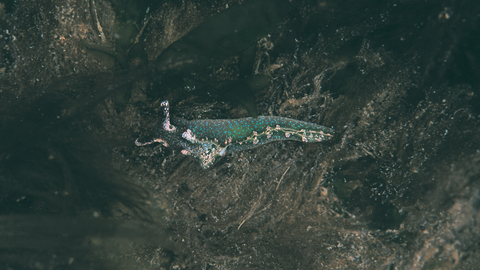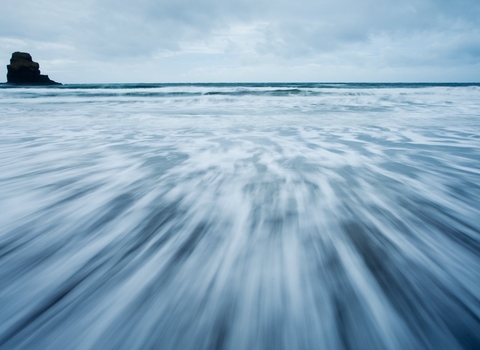
Solar powered sea slug by Paul Naylor
Solar powered sea slug
Scientific name: Elysia viridis
This remarkable creature shows nature’s fantastic complexity!
Species information
Category
Statistics
Up to 5cm longLifespan: 12-15 months
When to see
April-OctoberAbout
In an incredible ‘endosymbiotic’ relationship, this sea slug feeds on algae by slicing or puncturing its cells and is then able to ingest the algae’s chloroplasts unharmed, into its own body and carry out photosynthesis…hence the name, ‘solar powered sea slug!’They live between 12-15 months and unusually for a sea slug, can survive in low salinity (low salt) waters.
How to identify
The solar powered sea slug can grow up to 5cm long and is usually a vivid green, brown or red colour. It looks similar to the sea hare, with floppy ‘rhinophores’ which look a bit like bunny ears, but the solar powered sea slug has distinctive chloroplasts visible on its wings, foot and head, which look like tiny turquoise twinkling stars. When it unfolds its ‘winged’ body, this sea slug forms into a beautiful green leaf, which helps it camouflage amongst the algae and evade predators.Distribution
North East Atlantic, from the UK to the Mediterranean.Habitats
Did you know?
This sea slug is usually a vivid green colour, but it can also be red or brown depending on the type of algae it eats!How people can help
Always follow the Seashore Code when rockpooling, taking care where you walk and making sure you put animals and rocks back gently.
The Wildlife Trusts are working with sea users, scientists, politicians and local people towards a vision of 'Living Seas', where marine wildlife thrives. Do your bit for our Living Seas by supporting your local Wildlife Trust.

